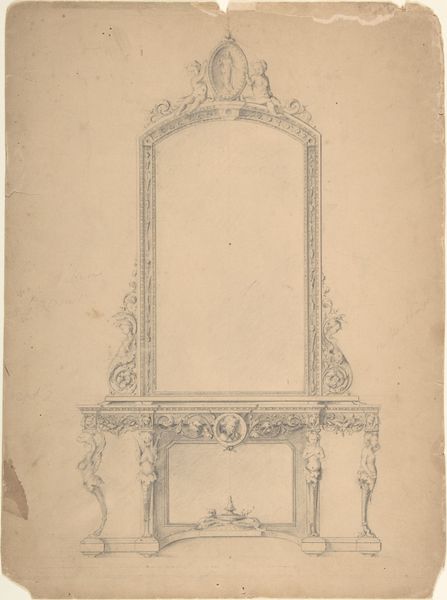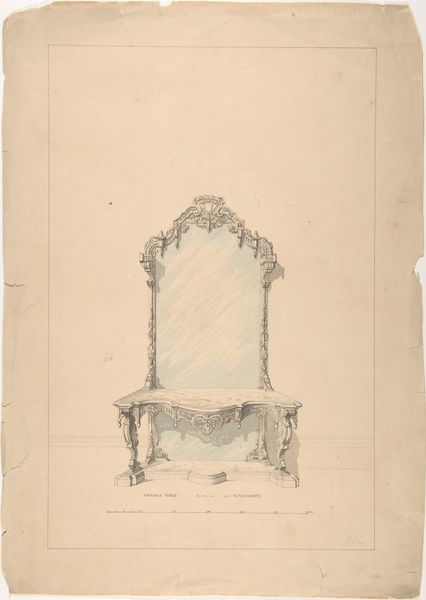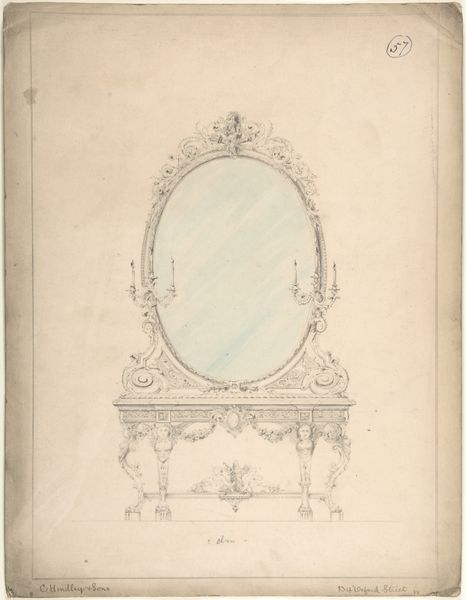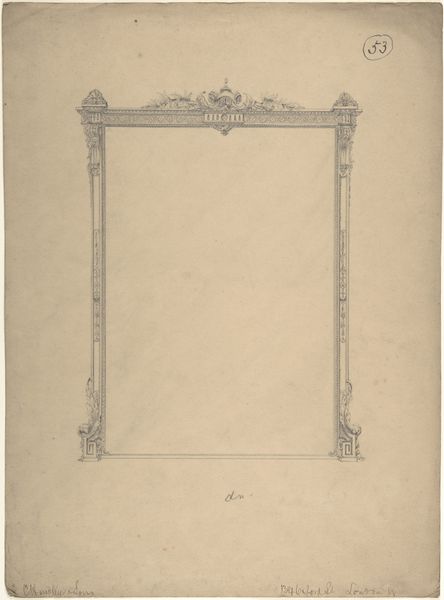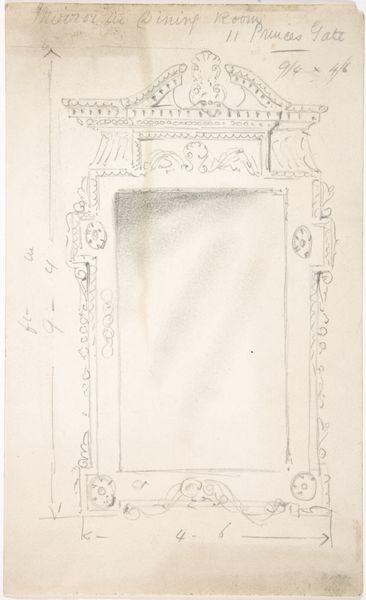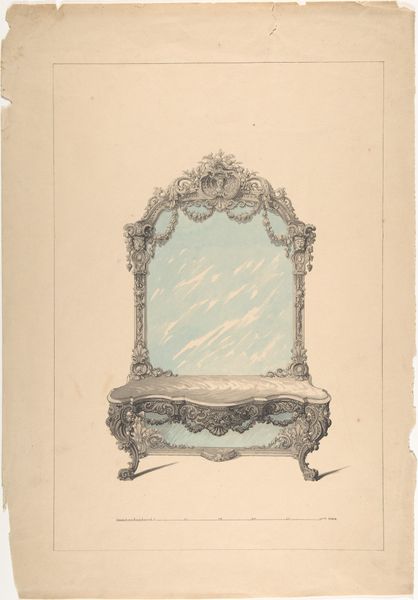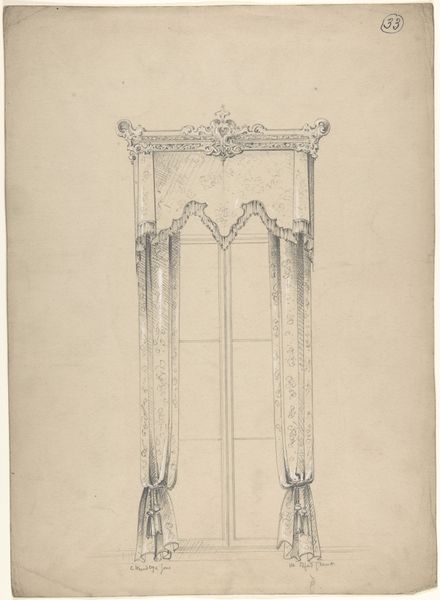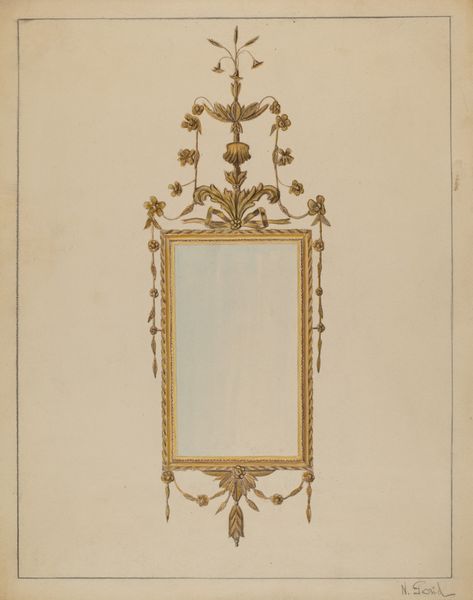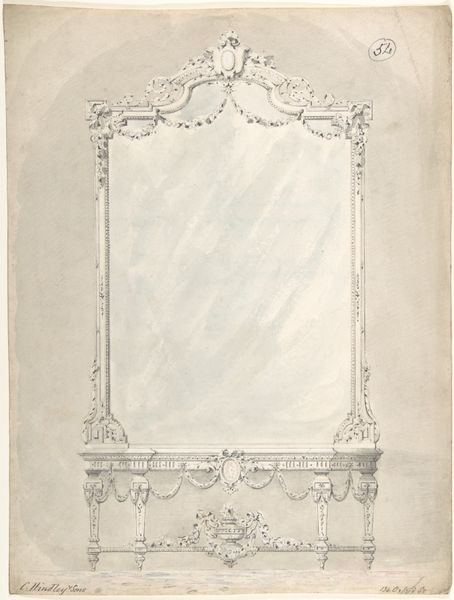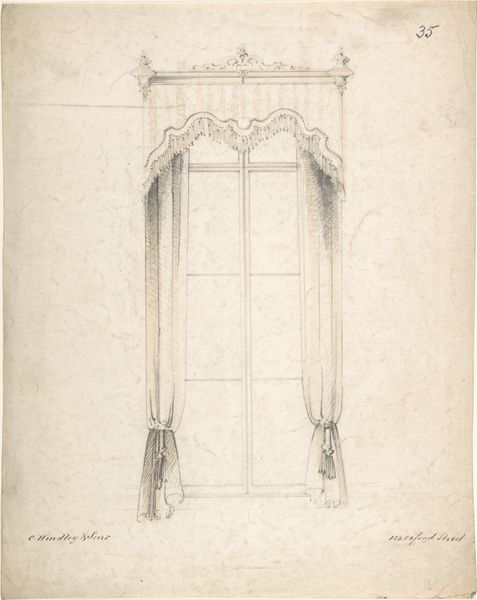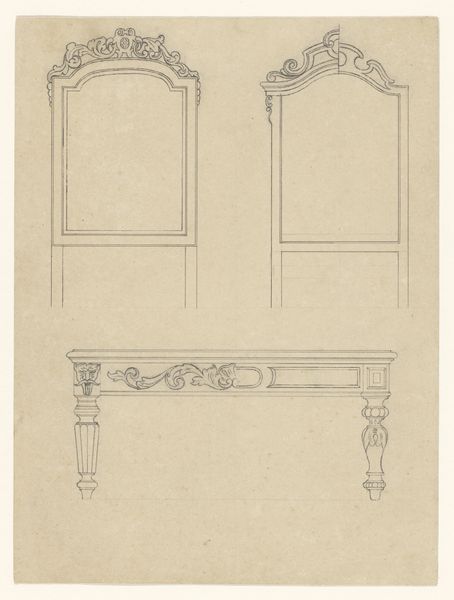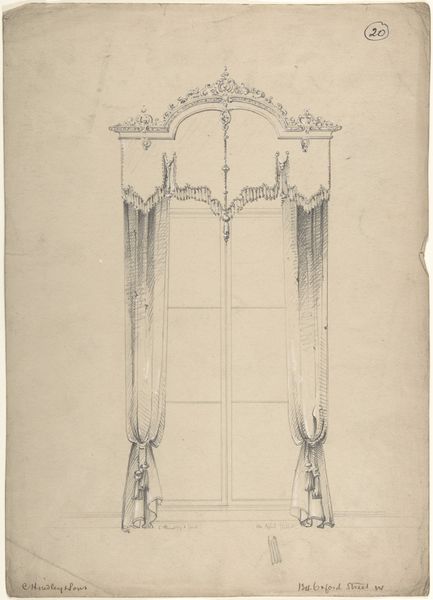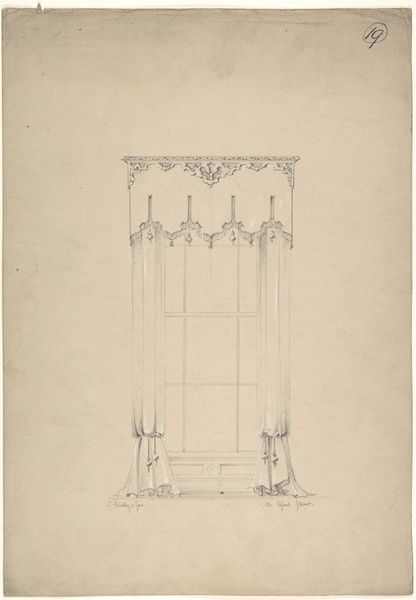
Design for a Mirror and Side Table 1841 - 1884
0:00
0:00
drawing, print, watercolor
#
drawing
#
table
# print
#
watercolor
#
decorative-art
#
watercolor
Dimensions: sheet: 14 5/8 x 10 1/2 in. (37.2 x 26.7 cm)
Copyright: Public Domain
Curator: The object before us, held by the Metropolitan Museum of Art, is a watercolor and print titled "Design for a Mirror and Side Table" produced sometime between 1841 and 1884 by Charles Hindley and Sons. Editor: My immediate impression is a sort of faded grandeur, like a blueprint for a lavish party no one attended. There's such ornate detail, softened by the muted color palette. Curator: Indeed, the Hindley firm produced high-end furnishings, tapping into Victorian aspirations of wealth and taste. Looking at this drawing allows us insight into the process by which such design choices and domestic ideals were put to paper before ever existing materially. Editor: The mirroring goes both ways, doesn't it? We're literally seeing a design *for* a mirror. This makes me consider ideas of representation and identity – who would gaze into this mirror, and what would it reflect about their position within a particular class structure? What narratives are constructed within the domestic space this furniture would have inhabited? Curator: Good point. Consider how Victorian homes often acted as stages for projecting social status. This mirror wouldn't just reflect one's image, but also affirm and perform particular standards of beauty, decorum, and wealth associated with the era's ideals. Also, observe the way decorative art like furniture began integrating itself with industrial methods of production to accommodate an increasing urban middle class. Editor: Exactly! This piece embodies that tension. While the design speaks of handcrafted elegance, the print aspect suggests reproduction and broader accessibility. The very materiality points to a negotiation of shifting class boundaries in Britain. Also, there's something poignant about the coolness of the color scheme given the presumed warmth of domesticity. Curator: It reminds me that visual codes like design can actively perform ideological work. Understanding art this way helps unpack some problematic facets of a society long since past. Editor: Right, it allows us to ask important questions, making visible issues of representation and power. Seeing how such design influenced social identities helps reveal our inheritance today. Curator: Well, viewing this design for a mirror, the reflection reveals to me more than meets the eye, making one wonder about domestic life in Victorian England. Editor: And for me, thinking about who gets to be *seen* within specific historical spaces truly contextualizes this piece.
Comments
No comments
Be the first to comment and join the conversation on the ultimate creative platform.
